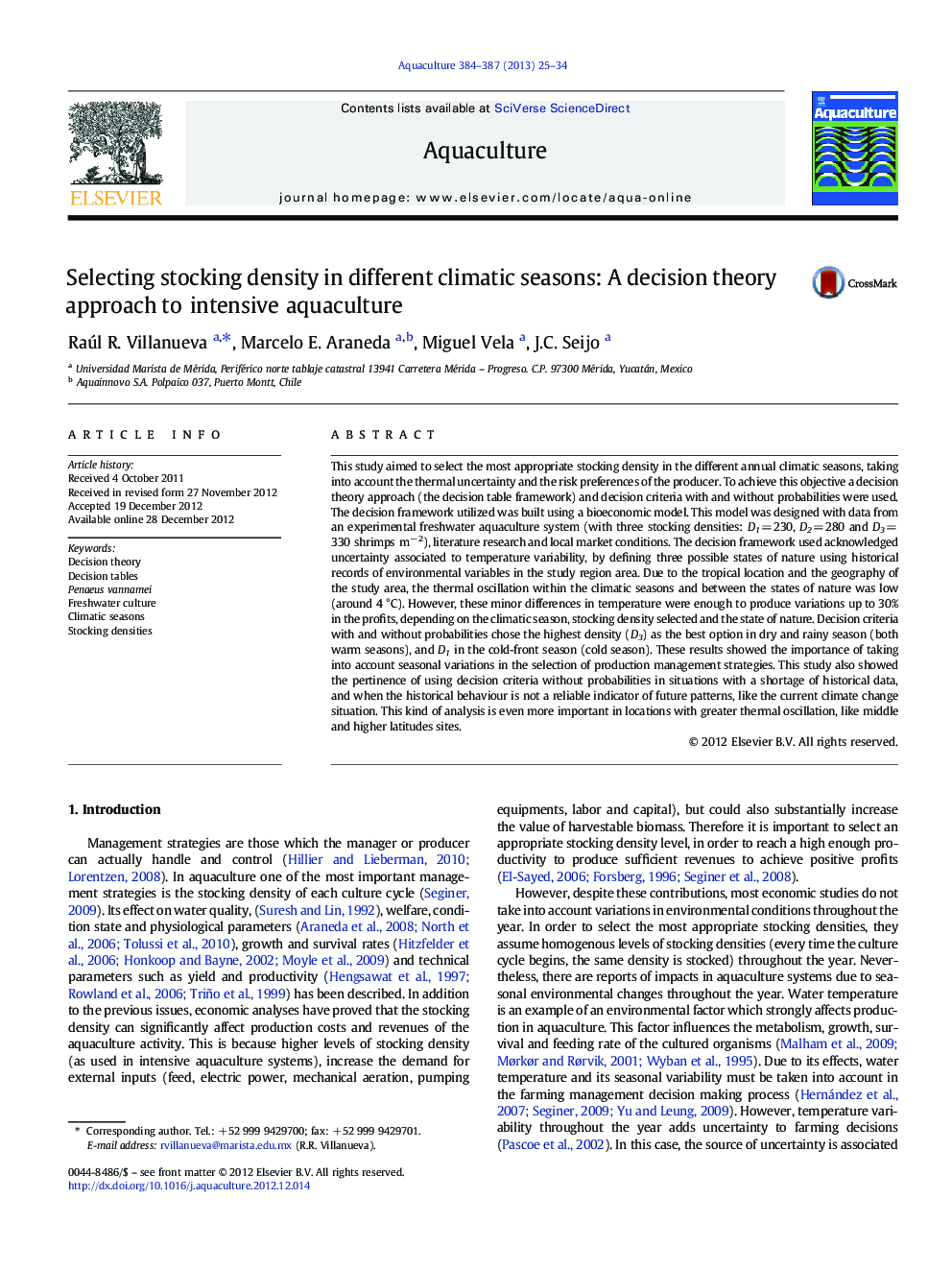| کد مقاله | کد نشریه | سال انتشار | مقاله انگلیسی | نسخه تمام متن |
|---|---|---|---|---|
| 2422219 | 1552877 | 2013 | 10 صفحه PDF | دانلود رایگان |

This study aimed to select the most appropriate stocking density in the different annual climatic seasons, taking into account the thermal uncertainty and the risk preferences of the producer. To achieve this objective a decision theory approach (the decision table framework) and decision criteria with and without probabilities were used. The decision framework utilized was built using a bioeconomic model. This model was designed with data from an experimental freshwater aquaculture system (with three stocking densities: D1 = 230, D2 = 280 and D3 = 330 shrimps m− 2), literature research and local market conditions. The decision framework used acknowledged uncertainty associated to temperature variability, by defining three possible states of nature using historical records of environmental variables in the study region area. Due to the tropical location and the geography of the study area, the thermal oscillation within the climatic seasons and between the states of nature was low (around 4 °C). However, these minor differences in temperature were enough to produce variations up to 30% in the profits, depending on the climatic season, stocking density selected and the state of nature. Decision criteria with and without probabilities chose the highest density (D3) as the best option in dry and rainy season (both warm seasons), and D1 in the cold-front season (cold season). These results showed the importance of taking into account seasonal variations in the selection of production management strategies. This study also showed the pertinence of using decision criteria without probabilities in situations with a shortage of historical data, and when the historical behaviour is not a reliable indicator of future patterns, like the current climate change situation. This kind of analysis is even more important in locations with greater thermal oscillation, like middle and higher latitudes sites.
► A decision theory approach was used for selecting seasonal stocking densities.
► Thermal uncertainty and risk preferences were considered by decision criteria.
► Low thermal variability can produce important differences in the profits.
► Seasonal changes cause a non-homogeneous approach as the best management strategy.
► Seasons with more appropriate temperatures, favor riskier management strategies.
Journal: Aquaculture - Volumes 384–387, 25 March 2013, Pages 25–34